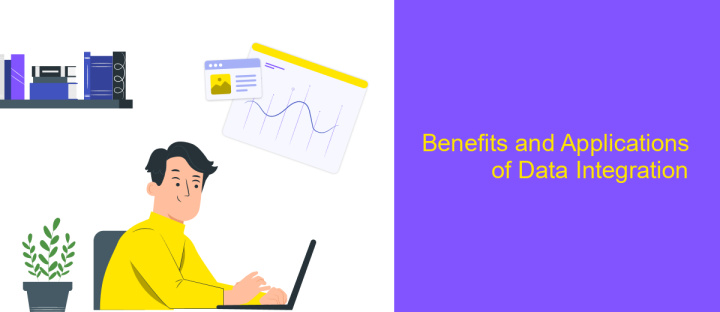Define Data Integration in Data Mining
Data integration in data mining is a crucial process that involves combining data from different sources to provide a unified view. This process enhances the quality and comprehensiveness of the data, enabling more accurate and insightful analysis. By integrating diverse datasets, organizations can uncover hidden patterns, trends, and relationships, driving more informed decision-making and strategic planning.
Introduction
Data integration in data mining is a critical process that involves combining data from multiple sources to provide a unified view. This process is essential for extracting meaningful insights and making informed decisions. As organizations collect vast amounts of data from various systems, the need for effective data integration becomes more pronounced. It ensures that data is accurate, consistent, and accessible, thereby enhancing the overall quality of data analysis.
- Combining data from different sources
- Ensuring data consistency and accuracy
- Enhancing data accessibility
- Improving decision-making processes
Effective data integration in data mining involves several techniques and tools designed to handle the complexities of merging disparate data sources. These techniques include data warehousing, ETL (Extract, Transform, Load) processes, and data federation. By leveraging these methods, organizations can create a cohesive dataset that supports robust data analysis and drives business intelligence initiatives. Ultimately, data integration is a foundational step in the data mining process, enabling organizations to unlock the full potential of their data.
Definition and Purpose of Data Integration

Data integration in data mining refers to the process of combining data from different sources to provide a unified and comprehensive view. This process involves merging data from various databases, data warehouses, and other data storage solutions to ensure consistency and accuracy. Data integration is crucial for effective data analysis as it allows organizations to draw more meaningful insights and make informed decisions based on a holistic view of their data.
The primary purpose of data integration is to eliminate data silos and enhance data accessibility and quality. By integrating data, organizations can streamline their operations, improve data governance, and facilitate better reporting and analytics. Tools like ApiX-Drive can simplify the data integration process by providing automated solutions for connecting various data sources. This service enables seamless integration without the need for extensive coding, making it easier for businesses to manage their data efficiently and focus on deriving actionable insights.
Challenges and Approaches in Data Integration

Data integration in data mining involves combining data from different sources to provide a unified view. This process is essential for effective data analysis but comes with several challenges that need to be addressed to ensure data quality and consistency.
- Data Heterogeneity: Different data formats, structures, and sources can make integration complex.
- Data Redundancy: Duplicate data can lead to inconsistencies and require careful handling.
- Data Quality: Ensuring the accuracy, completeness, and reliability of integrated data is crucial.
- Scalability: Large volumes of data require efficient processing techniques to integrate seamlessly.
- Security and Privacy: Protecting sensitive information during the integration process is paramount.
Approaches to tackle these challenges include the use of ETL (Extract, Transform, Load) tools, data warehousing, and employing data cleaning techniques. Additionally, leveraging machine learning algorithms can help in automating the integration process and ensuring data consistency. By addressing these challenges effectively, organizations can achieve a more accurate and comprehensive data analysis.
Benefits and Applications of Data Integration

Data integration in data mining offers numerous benefits that can significantly enhance business intelligence and operational efficiency. By consolidating data from various sources into a unified view, organizations can gain comprehensive insights that would otherwise be fragmented. This holistic perspective enables more accurate decision-making and fosters a deeper understanding of complex datasets.
Moreover, data integration facilitates improved data quality and consistency. When data from disparate sources is harmonized, it reduces redundancy and ensures that the information is up-to-date and accurate. This leads to more reliable analytics and reporting, which are crucial for strategic planning and regulatory compliance.
- Enhanced decision-making capabilities
- Improved data quality and consistency
- Streamlined business processes
- Better customer insights and personalization
- Increased operational efficiency
Applications of data integration span across various industries, including healthcare, finance, retail, and manufacturing. For instance, in healthcare, integrated data can improve patient care by providing a complete medical history. In finance, it aids in risk management and fraud detection. Ultimately, data integration is a cornerstone for leveraging big data to drive innovation and competitive advantage.


Conclusion
In conclusion, data integration in data mining is a crucial process that combines data from different sources into a unified view, enabling more comprehensive analysis and insightful decision-making. This process is essential for organizations aiming to leverage their data assets fully and achieve a competitive edge in today's data-driven landscape. Effective data integration not only enhances the quality and consistency of data but also ensures that valuable insights can be derived from a more extensive and diverse dataset.
Tools and services like ApiX-Drive play a significant role in simplifying the data integration process. By automating the connection and synchronization of various data sources, ApiX-Drive allows organizations to focus on analyzing and utilizing their data rather than spending time on complex integration tasks. This streamlining of data workflows ensures that businesses can quickly adapt to changing data environments and maintain a high level of data integrity, ultimately leading to more informed and strategic business decisions.
FAQ
What is data integration in data mining?
Why is data integration important in data mining?
What are the common challenges in data integration?
How can data integration be automated?
What are the benefits of using automation tools for data integration?
Time is the most valuable resource in today's business realities. By eliminating the routine from work processes, you will get more opportunities to implement the most daring plans and ideas. Choose – you can continue to waste time, money and nerves on inefficient solutions, or you can use ApiX-Drive, automating work processes and achieving results with minimal investment of money, effort and human resources.

